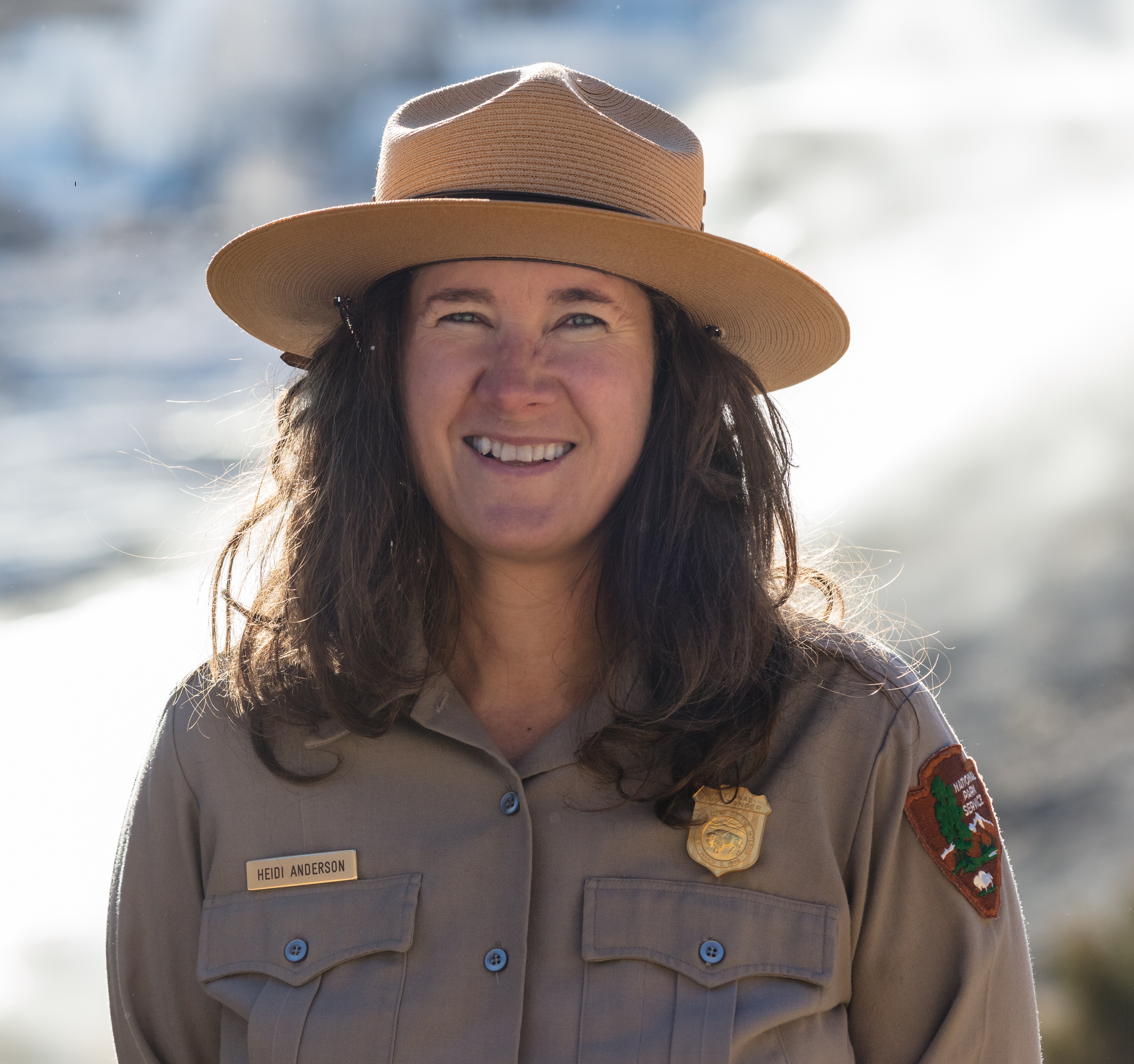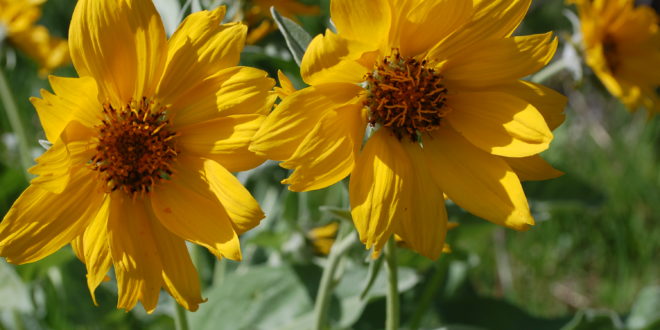There’s a big consolation for a long, snowy winter and a cool, wet spring in the Northern Rockies: breathtaking Yellowstone wildflowers, which are hitting their peak.
One very common flower is seen across the park from lower elevations at Mammoth Hot Springs (6,200 feet) on up to Dunraven Pass (more than 8,800 feet) near Canyon Village is arrowleaf balsamroot, a large, cheerful yellow flower.
 Arrowleaf balsamroot is a relative in the sunflower family, National Park Service Botanist Heidi Anderson (right) explained in a phone interview recently. The flowers, which reach a height of up to two feet, grow in large, friendly clumps, sometimes covering hillsides and open valleys. Its yellow petals radiate out from a yellow center and resemble a large daisy. The leaves are long and tapered with a pointed end, hence the “arrowleaf” name.
Arrowleaf balsamroot is a relative in the sunflower family, National Park Service Botanist Heidi Anderson (right) explained in a phone interview recently. The flowers, which reach a height of up to two feet, grow in large, friendly clumps, sometimes covering hillsides and open valleys. Its yellow petals radiate out from a yellow center and resemble a large daisy. The leaves are long and tapered with a pointed end, hence the “arrowleaf” name.
A couple of good places to see the flower from the roadside is between Mammoth and Tower on the park’s upper loop road, and then also on between Tower and Cooke City, Anderson said. For those inclined to hike a bit, arrowleaf balsamroot can also be seen on the Beaver Ponds trail, which is located above Mammoth Hot Springs.
And speaking of hiking, Anderson took the opportunity to remind people to take care and pay attention to the possibility of hiking in with non-native plants seeds sticking to one’s shoes or clothing. And she urged hikers to remain on established trails to help prevent the introduction of non-native plants to off-trail areas.
Arrowleaf balsamroot is peaking right about now, Anderson said, and she expects the bloom to last another week or two. Another yellow flower — heart-leafed arnica — will be in bloom soon in terrain similar to terrain friendly to balsamroot. The flowers are similar, but the arnica has a heart-shaped leaf.
Arrowleaf balsamroot is used by a variety of wildlife, according to Montana Fish, Wildlife and Parks. Deer and elk browse on the leaves and flowers. Anderson said she assumes birds and rodents eat the seeds, which resemble small sunflower seeds. Domestic livestock also browse on the plant, according to the Montana FWP website.
Anderson has a master’s degree from Michigan Tech in wetlands, and has worked in Yellowstone for 16 years. She gets excited when she talks about plants and flowers, the enthusiasm in her voice contagious. Other flowers enjoying a long, gorgeous blooming period this spring are shooting stars and phlox, with lupine and geraniums coming along soon, she said.
While visitors are required to stay at least 25 yards away from most animals and 100 yardsaway from bears or wolves, the beauty of flowers is how close to them you can get, she said. However, it’s a violation of park regulations to pick flowers, of course.
“It’s worth bending over and smelling the flowers,” she said. “Unlike animals, we can get close to them and touch them.”
 Yellowstone Insider Your Complete Guide to America's First National Park
Yellowstone Insider Your Complete Guide to America's First National Park






You must be logged in to post a comment.